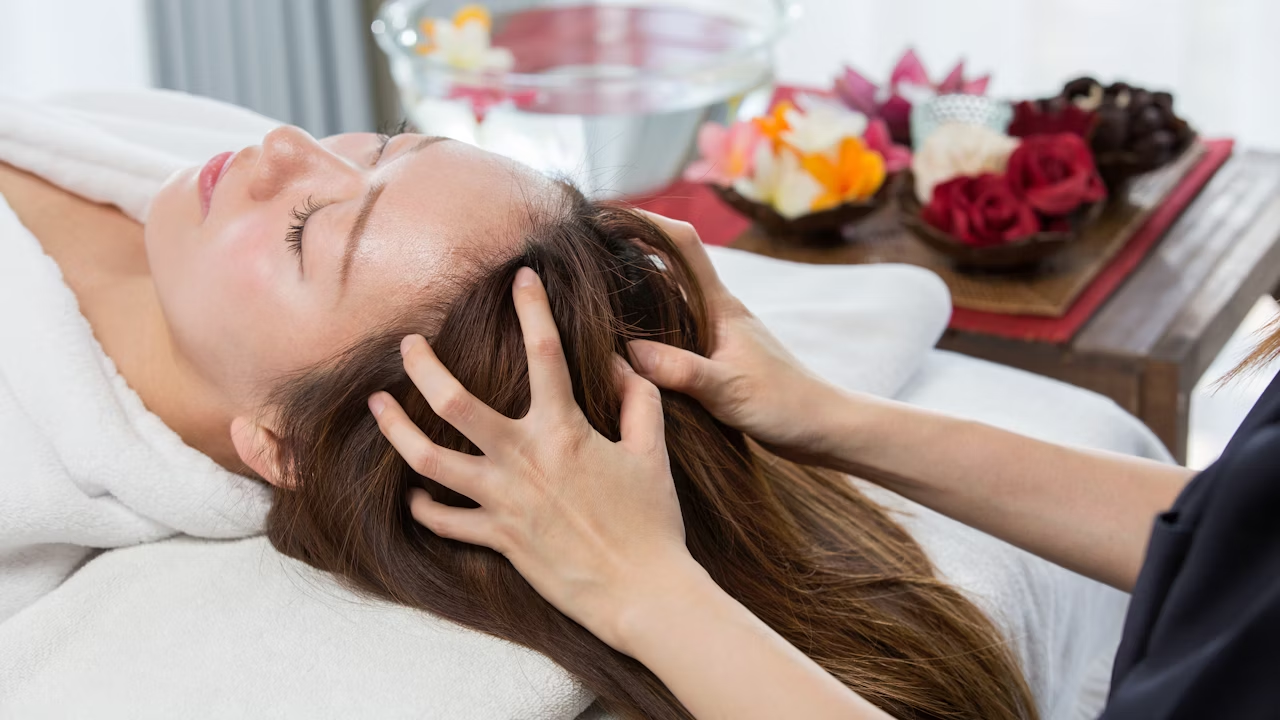In the bustling urban landscape of Toronto, finding moments of calm can seem like searching for a needle in a haystack. But what if the key to relieving stress, headaches, and enhancing your overall well-being was literally at your fingertips?
Welcome to the fascinating world of head acupressure therapy, where ancient wisdom meets modern wellness practices. At Head Spa Toronto, we’re passionate about helping Canadians discover the transformative power of targeted head therapy.
The Ancient Art of Head Acupressure
Acupressure, a cousin to acupuncture, has roots stretching back thousands of years in Traditional Chinese Medicine (TCM). While acupuncture uses needles to stimulate specific points, acupressure achieves similar benefits through firm finger pressure—making it accessible for everyone, anywhere.
Our head contains a remarkable network of acupressure points that, when properly stimulated, can trigger healing responses throughout the body. These points are connected to various meridians (energy pathways) that influence everything from mental clarity to physical comfort.
Key Acupressure Points on the Head and Their Benefits
1. Yintang (Third Eye Point)
Located between your eyebrows, Yintang is considered one of the most powerful points for mental relaxation.
Benefits:
- Relieves frontal headaches and sinus pressure
- Calms anxiety and racing thoughts
- Improves concentration and focus
- Helps with insomnia
How to Press: Using your index finger, apply gentle but firm pressure for 1-2 minutes while taking deep breaths.
2. Taiyang (Temple Points)
Found in the depressions at your temples, about one finger-width behind the midpoint between the end of your eyebrow and the outer corner of your eye.
Benefits:
- Alleviates temple headaches and migraines
- Reduces eye strain and fatigue
- Eases jaw tension
- Promotes mental clarity
How to Press: Using your middle fingers, apply gentle circular pressure for 1-2 minutes on both sides simultaneously.
3. Baihui (Hundred Convergences)
Located at the crown of your head, at the highest point where your ears would meet if drawn upward.
Benefits:
- Improves mental clarity and concentration
- Relieves vertigo and dizziness
- Boosts energy and reduces fatigue
- Calms the spirit and elevates mood
How to Press: Place your palm on top of your head, locate the highest point, and apply gentle pressure with your middle finger, moving in small circles for 2-3 minutes.
4. Fengchi (Wind Pool)
These paired points are found at the base of your skull, in the hollows on either side of the neck muscles.
Benefits:
- Relieves headaches, particularly those originating from neck tension
- Reduces stress and irritability
- Improves sleep quality
- Helps with cold and flu symptoms, including sinus congestion
How to Press: Tilt your head slightly forward and press both points simultaneously with your thumbs for 1-2 minutes.
5. Shuaigu (Command Bone)
Located about one inch above the ear apex, at the edge of the hairline.
Benefits:
- Helps with temporal headaches
- Reduces dizziness and vertigo
- Alleviates ear problems
- Improves hearing clarity
How to Press: Apply moderate pressure using your index finger in a circular motion for 1-2 minutes on each side.
6. Anmian (Peaceful Sleep)
Found behind the ear in the natural depression between the ear and the base of the skull.
Benefits:
- Promotes restful sleep
- Calms anxiety and stress
- Helps with insomnia
- Reduces restlessness
How to Press: Apply gentle pressure with your index fingers on both points simultaneously for 2-3 minutes before bedtime.
Incorporating Head Therapy into Your Wellness Routine
The beauty of head acupressure is its accessibility. You can practice these techniques during your morning commute on the GO Train, while taking a coffee break, or before bed to promote better sleep.
For Canadians balancing work, family, and our unique seasonal challenges, head therapy offers a practical self-care solution that requires no special equipment—just your hands and a few minutes of your time.
Quick Daily Routine:
- Start with Baihui to awaken and center yourself (30 seconds)
- Move to Yintang to calm the mind (1 minute)
- Press Taiyang points to release facial tension (1 minute)
- Finish with Fengchi to release neck tension (1 minute)
This simple 3.5-minute routine can be a game-changer for your daily wellness, especially during those high-stress months or during seasonal changes when headaches tend to increase.
Professional Head Therapy: Taking It to the Next Level
While self-administered acupressure offers significant benefits, professional head therapy sessions at Head Spa Toronto can elevate your experience to new heights. Our trained therapists understand the precise location and optimal pressure for each point, customizing treatments to your specific needs.
Professional sessions typically include:
- Thorough assessment of your concerns and health history
- Targeted treatment of specific acupressure points
- Complementary techniques such as scalp massage and aromatherapy
- Guidance for at-home self-care between sessions
Many of our clients report that regular professional head therapy sessions have helped them reduce dependence on pain medications, improve sleep quality, and enhance their overall quality of life.
A Canadian Approach to Head Therapy
As Canadians, we value practical, evidence-based approaches to wellness that complement our active lifestyles. Head therapy aligns perfectly with our appreciation for natural solutions and preventative health practices.
Whether you’re dealing with the pressure of Toronto’s fast-paced environment, managing seasonal affective disorder during our long winters, or simply seeking a moment of calm in your busy day, head acupressure offers an accessible solution rooted in ancient wisdom but perfectly suited to modern Canadian life.
Ready to experience the transformative benefits of professional head therapy? Book your session at Head Spa Toronto today and take the first step toward a more balanced, pain-free life.
Remember, wellness isn’t a destination—it’s a journey. And sometimes, that journey begins at the top of your head.

